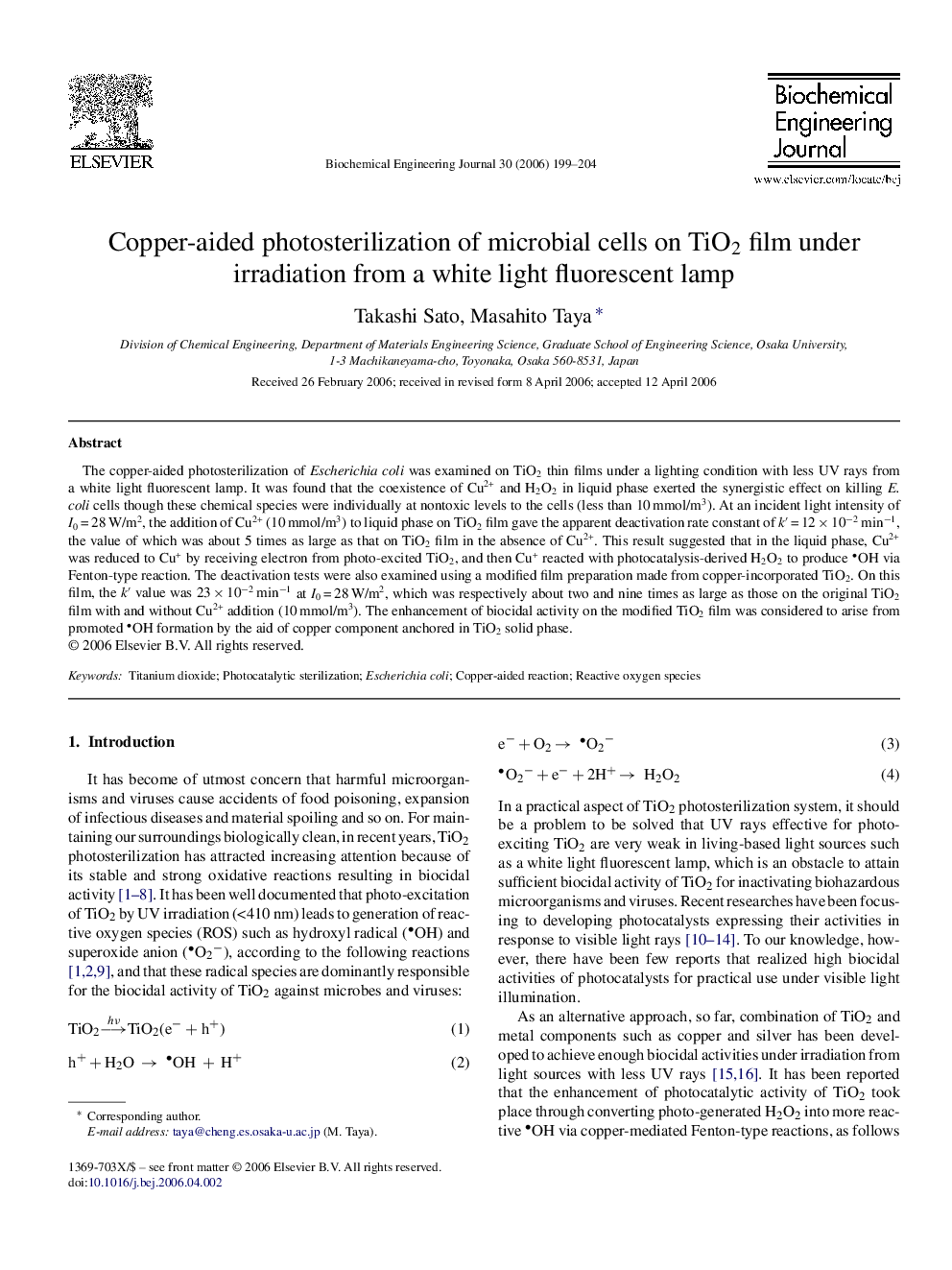| Article ID | Journal | Published Year | Pages | File Type |
|---|---|---|---|---|
| 5010 | Biochemical Engineering Journal | 2006 | 6 Pages |
The copper-aided photosterilization of Escherichia coli was examined on TiO2 thin films under a lighting condition with less UV rays from a white light fluorescent lamp. It was found that the coexistence of Cu2+ and H2O2 in liquid phase exerted the synergistic effect on killing E. coli cells though these chemical species were individually at nontoxic levels to the cells (less than 10 mmol/m3). At an incident light intensity of I0 = 28 W/m2, the addition of Cu2+ (10 mmol/m3) to liquid phase on TiO2 film gave the apparent deactivation rate constant of k′ = 12 × 10−2 min−1, the value of which was about 5 times as large as that on TiO2 film in the absence of Cu2+. This result suggested that in the liquid phase, Cu2+ was reduced to Cu+ by receiving electron from photo-excited TiO2, and then Cu+ reacted with photocatalysis-derived H2O2 to produce OH via Fenton-type reaction. The deactivation tests were also examined using a modified film preparation made from copper-incorporated TiO2. On this film, the k′ value was 23 × 10−2 min−1 at I0 = 28 W/m2, which was respectively about two and nine times as large as those on the original TiO2 film with and without Cu2+ addition (10 mmol/m3). The enhancement of biocidal activity on the modified TiO2 film was considered to arise from promoted OH formation by the aid of copper component anchored in TiO2 solid phase.
